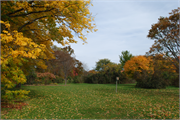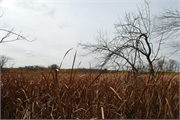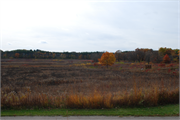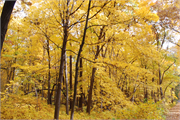Property Record
1207 Seminole Highway
Architecture and History Inventory
| Historic Name: | University of Wisconsin Arboretum |
|---|---|
| Other Name: | |
| Contributing: | Yes |
| Reference Number: | 229324 |
| Location (Address): | 1207 Seminole Highway |
|---|---|
| County: | Dane |
| City: | Madison |
| Township/Village: | |
| Unincorporated Community: | |
| Town: | |
| Range: | |
| Direction: | |
| Section: | |
| Quarter Section: | |
| Quarter/Quarter Section: |
| Year Built: | 1933 |
|---|---|
| Additions: | |
| Survey Date: | 2014 |
| Historic Use: | |
| Architectural Style: | NA (unknown or not a building) |
| Structural System: | |
| Wall Material: | |
| Architect: | |
| Other Buildings On Site: | Y |
| Demolished?: | No |
| Demolished Date: |
| National/State Register Listing Name: | University of Wisconsin Arboretum |
|---|---|
| National Register Listing Date: | 1/28/2019 |
| State Register Listing Date: | 11/20/2015 |
| National Register Multiple Property Name: |
| Additional Information: | A 'site file' exists for this property. It contains additional information such as correspondence, newspaper clippings, or historical information. It is a public record and may be viewed in person at the Wisconsin Historical Society, Division of Historic Preservation. The University of Wisconsin Arboretum is a 1,260-acre tract of land that wraps around the south, east and west shores of Lake Wingra and extends south past the Beltline Highway. Much of that portion of the Arboretum that lies north of the Beltline Highway was acquired piecemeal between 1932 and 1936. The Grady Tract, 200 acres lying south of the Beltline Highway, was added in 1940. By 1940, the Arboretum had most of its current size and shape; a few small parcels have been acquired since that time. Design Elements and Buildings In 1933, Albert F. Gallistel, an architect and the University's Superintendent of Buildings and Grounds, designed the road that winds through the Arboretum north of the West Beltline Highway. Now called McCaffrey Drive, this paved road was originally gravel. It was laid out with grades and curves in such a way as to make the drive an invisible element in the overall view of the Arboretum. Gallistel also designed the rustic sandstone Seminole Highway entrance gates, in 1937. G. William Longenecker, a horticulturist who was the first director of the Arboretum, designed the landscaping at this entrance. From 1935 until 1941, the Civilian Conservation Corps (C.C.C.) maintained a camp in the Arboretum, doing most of the building and planting in the preserve that took place during that period. Several of the C.C.C.'s frame buildings survive. These are located east of the Visitors Center (built in 1974 and expanded in 2001), deep within the Arboretum. There are other landscape elements (notably Jens Jensens design of the Kenneth Wheeler Council Ring in 1938) and a few buildings on the property. Plantings Naturalistic plantings to recreate the pre-settlement landscape (now called, ecological restoration) began in the Arboretum in 1934, with the planting of pines in the 21-acre plot that is now called the Leopold Pines. This section is located just north of the Beltline Highway and to the east of Seminole Highway. Between the Leopold Pines and Seminole Highway are the Noe Woods. Added to the Arboretum in 1933, these woods have never been developed and are a remnant of a pre-settlement era forest of black and white oaks, some of which are believed to predate 1830. Just south of the West Beltline Highway, at the north end of the Grady Tract, are the Evjue Pines. The Arboreturm acquired the Grady Tract in 1940. Pines were planted here shortly thereafter. It is interesting to note that planting to create the Curtis Prairie began in 1935. As early as 1909, distinguished city planner John Nolen had recommended that a large park be established around Lake Wingra, connected to Vilas Park. Nolen had also suggested an arboretum, for the study of trees, patterned after the Arnold Arboretum in Boston and located west of the University of Wisconsin campus. But the city's golden era of park creation (1892-1910), funded by public donations and large monetary gifts from local philanthropists, was drawing to an end. In 1922, the first step toward the founding of the Arboretum was taken when Michael B. Olbrich and others formed the Madison Parks Foundation with the intention of acquiring land for public parks. Olbrich and Charles N. Brown were particularly interested in the Charles Nelson farm, a large parcel on the southwestern shore of Lake Wingra. The Madison Parks Foundation secured an option on the property and began raising the funds to buy it. In December 1927, Olbrich, then a member of the University of Wisconsin Board of Regents, proposed that the University acquire land on the south side of Lake Wingra (including the Nelson farm) for an arboretum. Olbrich urged the establishment of an arboretum that would not only preserve trees for the enjoyment of the public and for scientific study, but would also be a wildlife refuge. The Regents accepted the proposal, but the financial crash and Olbrich's death in 1929 put the project on hold. In 1931, Joseph Jackson and Paul Starck revived the project and in January 1932, the Madison Parks Foundation transferred the 245 acres it had acquired to the University. The president of the University appointed an Arboretum Committee and an Advisory Committee to oversee the development of the Arboretum. Horticulturist G. William Longenecker was named executive director and Aldo Leopold, a prominent naturalist, became research director. The purpose of the Arboretum was the first issue to resolve. Some argued that the Arboretum should be a formal landscape, with a few carefully-placed trees for study (on the order of a botanical garden, or a zoo for trees). Longenecker and others urged that the plantings be naturalistic. Longenecker won and work began in 1933, clearing out existing farm buildings, posting the Native American mounds, conducting soil and plant surveys, and constructing what is now McCaffrey Drive. The same year, Aldo Leopold drafted the Arboretums wildlife management plan. In 1934, the first pines were planted in the 21-acre plot now known as the Leopold Pines (just north of the West Beltline Highway). On 18 June 1934, the Arboretum was dedicated with a variety of speeches. With John Nolen in attendance, Aldo Leopold became the first to publicly articulate what the Arboretum would become: not a mere collection of trees, but a sample of what Dane County looked like when our ancestors arrived here. With the Arboretum Committee charting the development of the property at six-month intervals and free labor provided by the C.C.C. from 1935 until November 1941, the Arboretum began its sojourn as a laboratory for ecological restoration. In 1940, the Grady Tract (south of the West Beltline Highway) was added to the Arboretum; the planting of what are now called the Evjue Pines commenced shortly thereafter. Through the years, the Arboretum staff, the University and numerous volunteers have labored to restore and manage the Arboretum as an ecological preserve for native plant communities and wildlife. The Arboretum was a pioneering experiment in ecological restoration and, according to the current director, Greg Armstrong, the Arboretum was in fact the first ecological restoration project in the world. |
|---|---|
| Bibliographic References: |
| Wisconsin Architecture and History Inventory, State Historic Preservation Office, Wisconsin Historical Society, Madison, Wisconsin |




